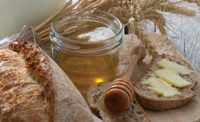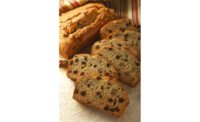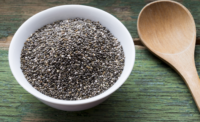More people are growing increasingly aware of the amount of sugar in their diets. The 2017 “Food & Health Survey” from the International Food Information Council found that 76 percent of respondents were trying to limit or avoid sugar.
According to Pam Stauffer, global marketing manager, Cargill, Minneapolis, has conducted proprietary research showing one-third of consumers are already actively reducing the amount of sugar in their diets.
Consumer desire for healthier choices, upcoming new labeling requirements and media messaging linking excessive sugar consumption to health concerns are all factors driving the growing demand for reduced sugar solutions.
In 2015, the HHS and USDA issued the 2015 Dietary Guidelines for Americans. The recommendations state that, as part of a healthy diet, we should limit and consume less than 10 percent of calories per day from added sugars.
The American Heart Association recommends limiting the daily intake of added sugars to no more than 6 teaspoons a day for women, and 9 teaspoons a day for men—but estimates we currently eat an average of 20 teaspoons of sugar a day based on the data from the 2005-2010 NHANES (National Health and Nutrition Examination Study) study.
On May 20, 2016, the FDA issued new changes to the Nutrition Facts panel to provide consumers with more information to help them make better food choices. The new legislation will require companies to include the level of “added sugar” in grams and as percent daily value on product labels. The FDA defines added sugars as, “sugars that are either added during processing of foods or are packaged as such, and include sugars (free, mono- and disaccharides), sugars from syrups and honey, and sugars from concentrated fruit or vegetable juices that are in excess of what would be expected from the same volume of 100 percent fruit or vegetable juice of the same type.” The proposed changes were initially required to be in place by July 26, 2018; however, the compliance date is most likely going to be pushed back to January 1, 2020 to allow companies more time to implement these label changes. Many food companies have already stated they intend to reduce the calories and sugar in their products.
The challenge with reducing sugar in products is that most consumers are not willing to sacrifice taste for the nutritional benefit. Sugar provides functional properties in the finished products that also need to be addressed. In addition, consumers are moving away from artificial sweeteners and looking for more natural options. The good news is these new sweetening ingredients are providing more tools in the toolbox that manufacturers can utilize to meet growing consumer expectations.
A sweet challenge
Typically, when working to reduce sugar, no single ingredient can replace its functionality. Sugar contributes to moisture control, spread, mouthfeel and more.
When replacing or reducing sugar, product developers often need multiple tools to successfully deliver both sweetness and functionality in snacks and baked goods.
“While sugar’s sweetness builds, rounds and drops off slowly, high-intensity sweeteners tend to hit sharply and then linger,” explains Thom King, president and CEO, Icon Foods, Portland, OR. “The presence or absence of other ingredients can magnify or mute sweetener tendencies. When certain sweeteners are used in tandem, their value exceeds their solo contribution.”
But each success story is often individualized. “There isn’t a ‘Holy Grail’ when it comes to sweeteners,” says Sarah Scholl, food scientist and bakery team lead, Tate & Lyle, Hoffman Estates, IL. “Sugar replacement is never really a one-for-one exchange. High-potency sweeteners enable manufacturers to significantly reduce sugar in formulations without compromising taste. However, because these sweetening ingredients are used in such small quantities in the final product, they do not result in functional attributes, like bulk or mouthfeel.”
Luckily, snack producers and bakeries have a wide range of ingredient options today to help find formulation success.
Rare finds
Rare sugars are monosaccharides and their derivatives that exist in small quantities in nature. According to Koji Sasaki, manager, snacks and confections developments, R&D, Matsutani Chemical Industry Co. Ltd., Itami, Japan, there are over 50 kinds of rare sugars found today. Matsutani has spent years researching ASTRAEA allulose, which occurs naturally in figs, raisins and jackfruit, and provides 70 percent of the sweetness of sugar.
“ASTRAEA allulose can be used as a low-calorie bulking sweetener, which means is can be used as a sucrose replacer,” says Sasaki. “The best applications for ASTRAEA allulose include cakes, muffins and cookies. When allulose is used in these products, it brings colors of burned sugar, just like sucrose, while offering a lower-calorie baked good.”
Tate & Lyle has also invested in developing allulose for the market, sold under its DOLCIA PRIMA brand, which recently saw a new line extension. “The new DOLCIA PRIMA Crystalline allulose offers all of the same benefits of DOLCIA PRIMA allulose syrup, and opens up new categories and applications, such as fat-based creams and chocolate confectionary,” says Scholl. “DOLICA PRIMA Crystalline allulose delivers a clean, sweet taste and can be formulated into a variety of baking and snack applications.”
Allulose is best used with other sweeteners, especially at higher sugar-reduction levels. It has shown strong synergies with sucralose, stevia and other high-intensity sweeteners.
The latest sweetening system from Icon Foods is called KetoseSweet+ and is a blend of allulose and monk fruit extract, which is slightly sweeter than sucrose. King notes KetoseSweet+, a simple plug-in, clean-label sweetening solution, has the potential to make deep cuts in added sugar on product labels. “Additionally, KetoseSweet+ provides the expected mouthfeel that sugar imparts, leading to a more-satisfying flavor without requiring the addition of bulking compounds.” Since KetoseSweet+ functions like sugar, it can be used in a broad range of food applications, especially baking where it can provide multiple functional benefits.
Naturally sweet
Improved stevia solutions continue to come to market. Cargill’s ViaTech stevia sweetener can achieve optimal sweetness and significant sugar reduction without compromising taste. “Part of what sets ViaTech portfolio apart from other stevia sweeteners is Cargill’s proprietary taste prediction model, which can precisely predict which combination of steviol glycosides deliver optimal taste and sweetness,” says Pam Stauffer, global marketing manager. “ViaTech’s improved sweetness and flavor dynamics open the door to far greater sugar reductions in a wide range of applications.”
Zerose erythritol is another tool in Cargill’s sweetener portfolio that can reduce sugar. “Erythritol is a natural, zero-calorie bulk sweetener that looks and tastes like sugar,” says Stauffer. “It masks the aftertaste of high-intensity sweeteners and offers significant advantages over other polyols, including a higher digestive tolerance and clinically proven dental benefits.”
Cargill has had success with reducing up to 50 percent of the sugar typically in cookies, cupcakes, cereals and other sweet snacks by using a combination of ViaTech stevia and Zerose erythritol.
Another tool for sugar reduction is Oliggo-Fiber chicory root fiber. “It provides key functional properties, including helping to modulate the flavor of some high-intensity sweeteners and acting as a bulking agent when removing sugar from a formulation,” says Stauffer.
Stevia sweetener options at Ingredion Incorporated, Westchester, IL include BESTEVIA 95 percent pure Reb M, and a portfolio of ENLITEN Reb A stevia products across a range of Reb A contents. Afrouz Naeini, senior marketing manager, notes BESTEVIA Reb M is unique in the sense that it is very sugar-like. “It provides higher sweetness concentrations compared to Reb A, while it has little to no bitter aftertaste, making it an ideal stevia sweetener to replace significantly higher levels of sugar without the need for masking agents of flavors.”
Other options are also on the menu at Ingredion. “Our new VERSASWEET portfolio of low-sugar syrups includes non-GMO and Non-GMO Project Verified low-sugar corn and tapioca syrup options,” says Naeini. “In addition, our wide portfolio of polyols, including non-GMO options, and access to a wide portfolio of fruit and vegetable concentrates, offer opportunities for sugar reduction—in addition to the creation of a clean, simple and consumer-friendly label.”
Snack formulators and bakers also increasingly turn honey. Catherine Barry, director of marketing, National Honey Board, Firestone, CO, cites a 2015 survey that found 93 percent of consumers view honey as natural, which is significantly higher than any other sweetener. “It’s really a timeless sweetener that is gaining popularity as baking and snack food manufacturers reevaluate their formulations to create more natural and clean-label products, while still maintaining flavor and shelf life.”
Taste modulation
Taste modulators are also a savvy options in the sweetener toolbox. FlavorHealth, North Brunswick, NJ, focuses on the discovery of natural compounds that can be used to create better-for-you foods, including to reduce sugar. “Oricol is a natural sweet enhancer that works with caloric and non-caloric sweeteners by increasing sweet perception by up to 50 percent,” says Dinah Diaz, senior marketing manager. She notes that Oricol is labeled as “natural flavor.”
Ongoing consumer interest in reducing dietary intake of sugar will continue to drive the need for more tools for sweetener solutions. And the new FDA labeling guidelines related to “added sugars” will only fortify an already strong groundswell of innovation.






